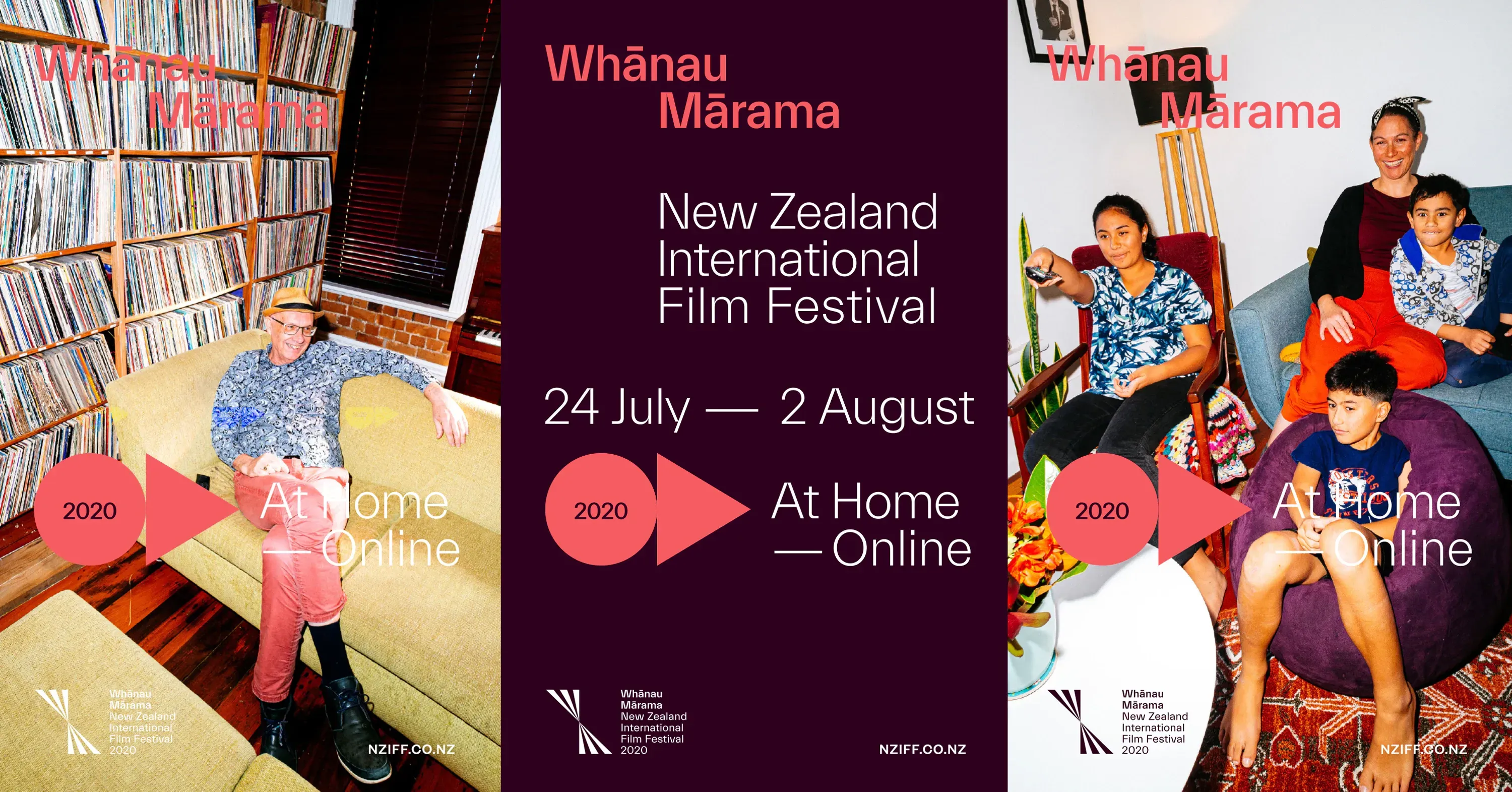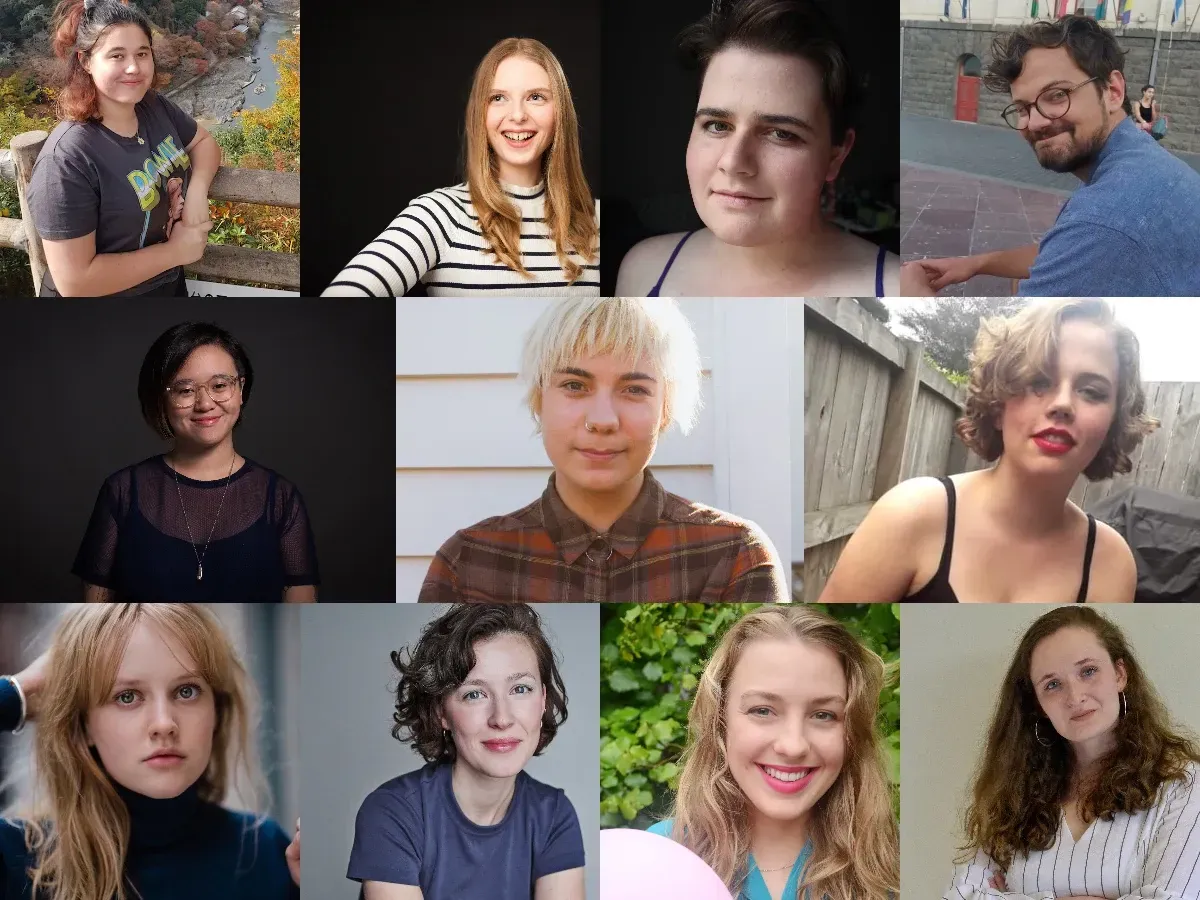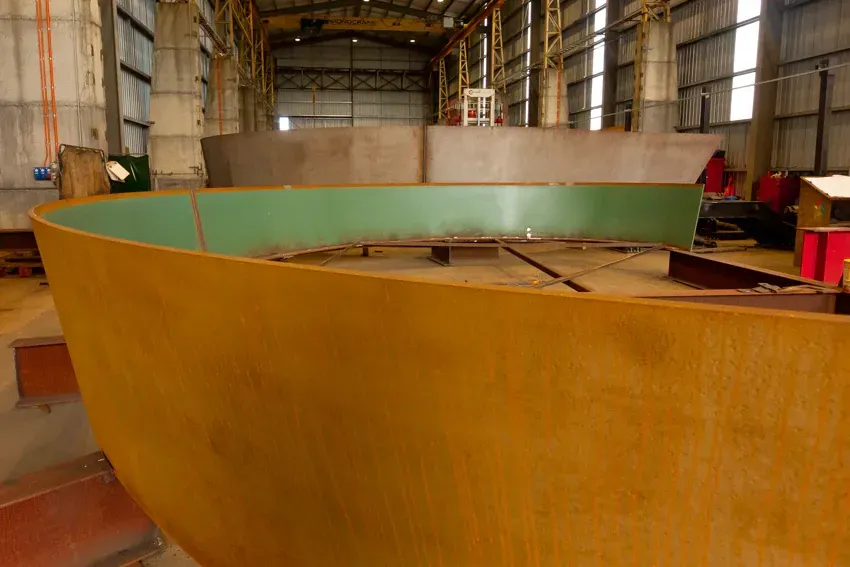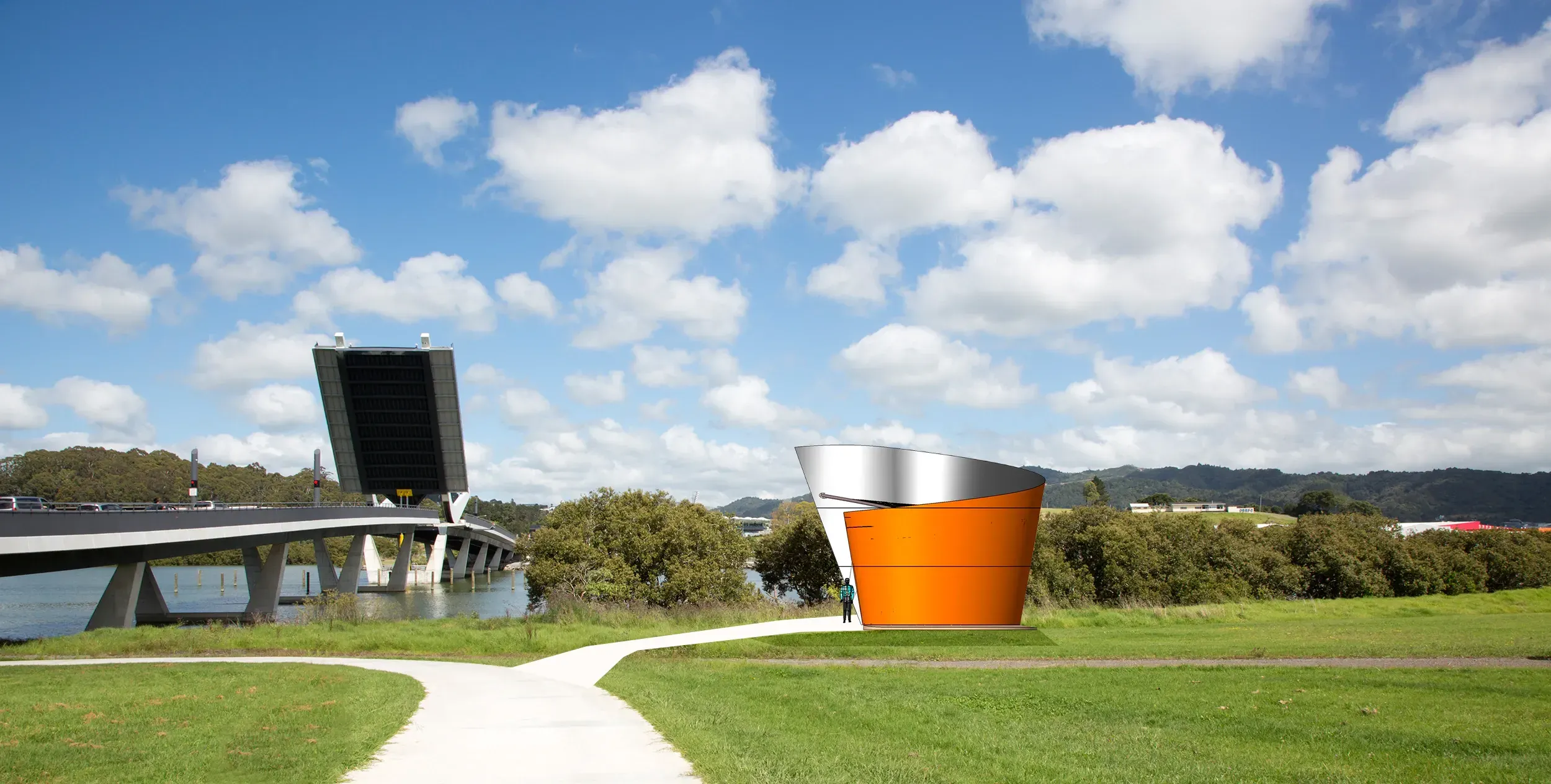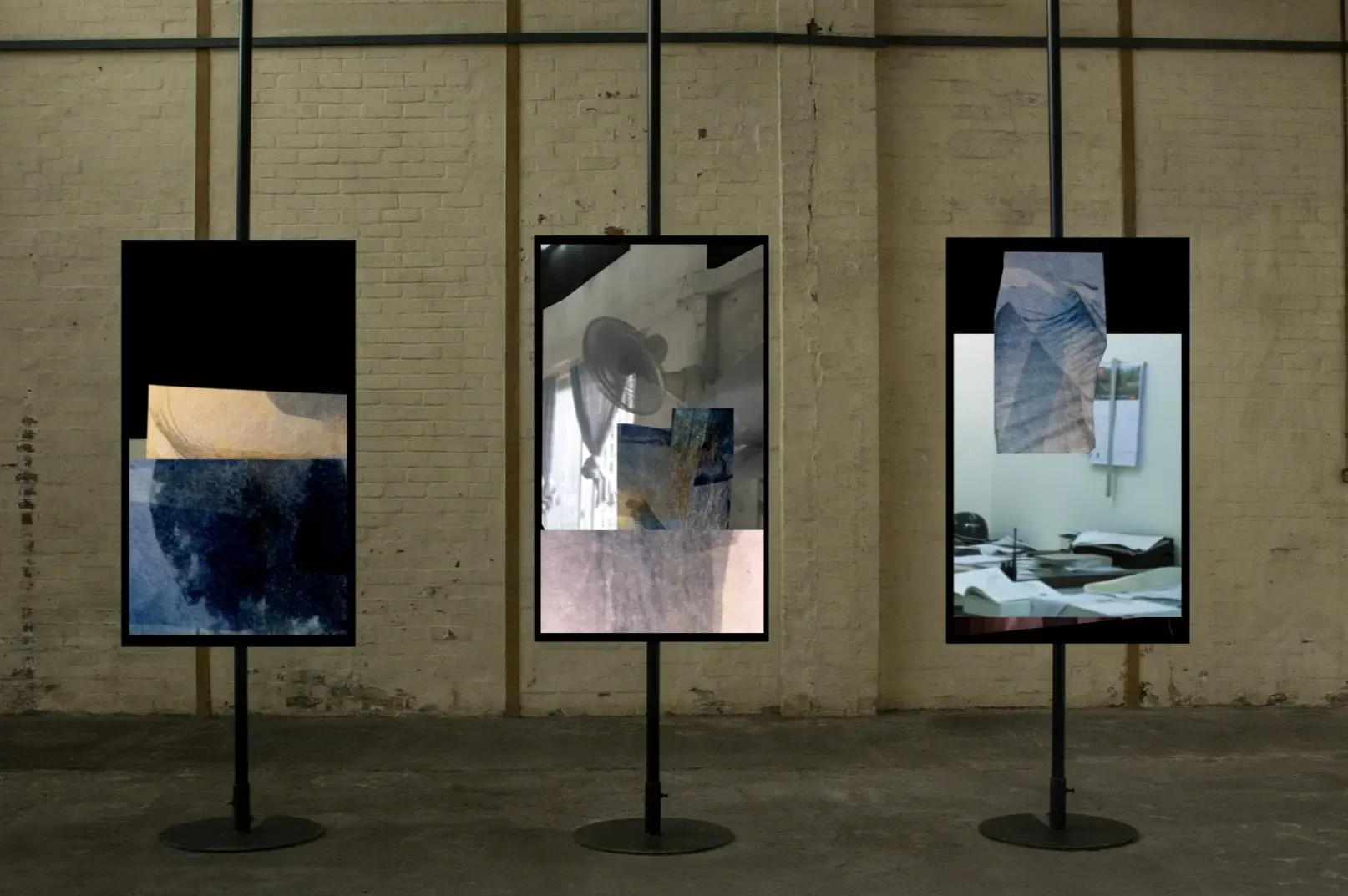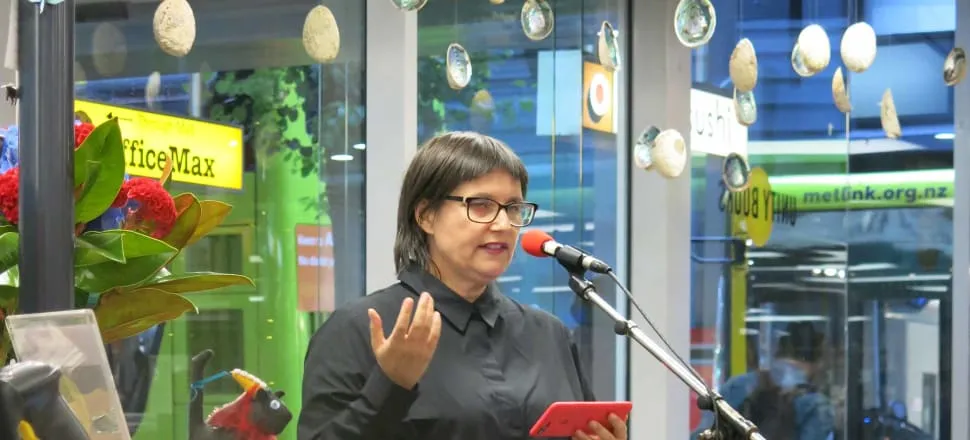Where Shall we Site the Colonial Graveyard?
Written by
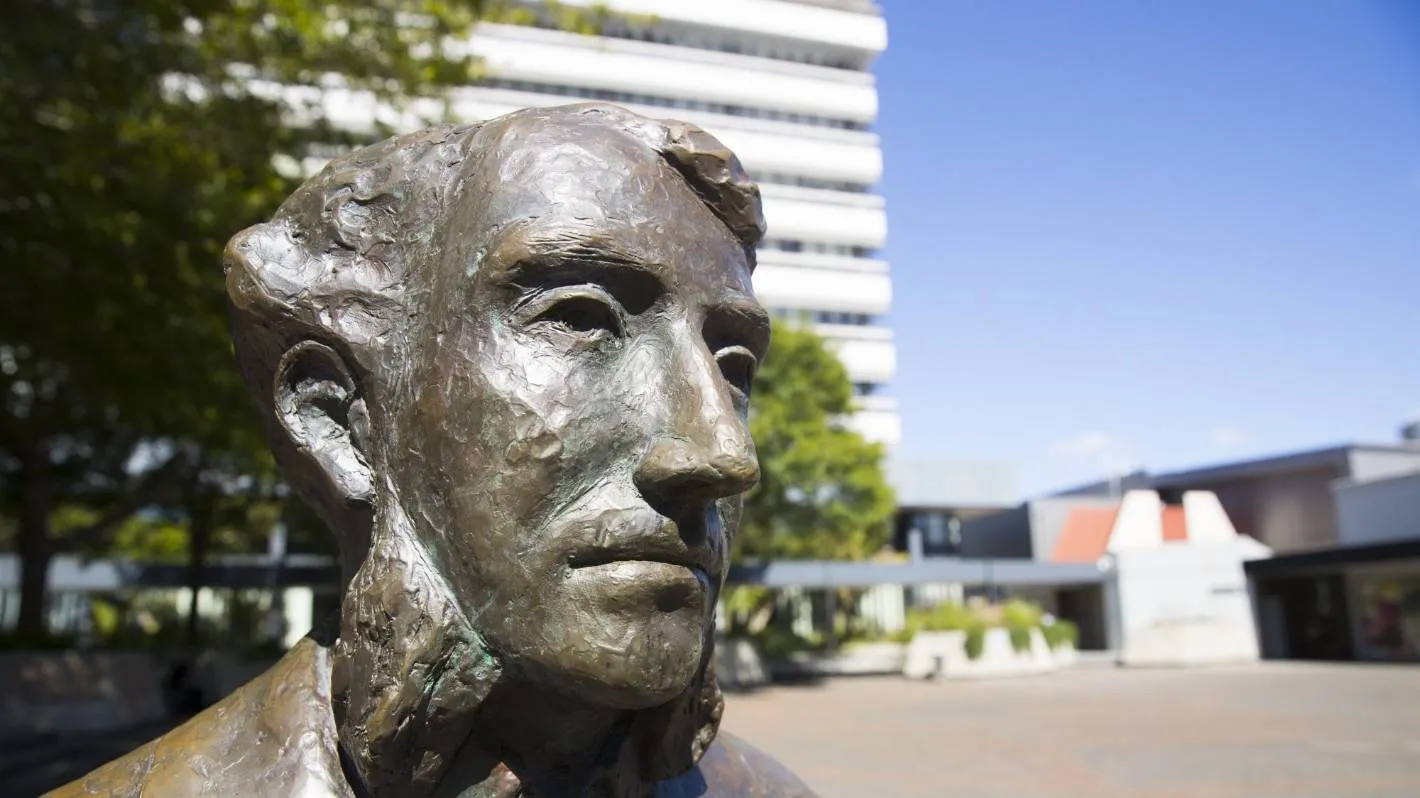
Getting Down off our Pedestals
Brought on by #BlackLivesMatter, this last week has seen a further push in some welcome reassessment of the status of some of our public monuments. No public art or statuary is any more permanent than the people who put it there; cities and townscapes change with time. All such monuments - often produced at the whim of mayors and governors rather than by any kind of citizen movement - need regular assessment. As public fountains and sculptures date and are quietly shuttled off to a city council depot, so do monuments. But they needn’t be melted down.
It’s a difficult tension in Aotearoa - after all, we’ve been lousy at looking after our heritage over a short colonial history. But while historic buildings have been greedily demolished to free up land, we’ve failed to question the status of monuments that seek principally to assert power and control over ‘subjects’, in particular, Pākehā over Māori. Vandalism of these monuments over the years is just the evidential tip of an iceberg of hurt. As University of Canterbury history professor Katie Pickles comments in an article on The Conversation: “The global furore about the meaning and relevance of statues, memorials and place names from a racist, imperial past presents a special challenge to Aotearoa-New Zealand. In this former colonial outpost, we are dealing with a double burden: the memorialisation of unsavoury historical figures, and the fact that they were imported from elsewhere.”
“It’s not enough simply to say they ‘tell our story’,” writes Shane Te Pou on Stuff, “when, in fact, they merely represent a narrow expression of what certain powerful people wanted us to believe at a given point in time.”
Last week leaders of the Māori Party called for an inquiry into colonial monuments and street names. Jacinda Ardern has said the removal of statues is a community decision. A lead in this regard was taken last week in Hamilton (where a people’s referendum is being called for over a reversion to the name Kirikiriroa) with the removal of a statue of Captain John Hamilton from the city’s civic square. That followed a formal request from local iwi Waikato-Tainui. Hamilton was a British naval officer who led a regiment at the Battle of Gate Pā during the New Zealand Wars - connecting the name and statue to the subjugation of Māori isn’t hard to do.
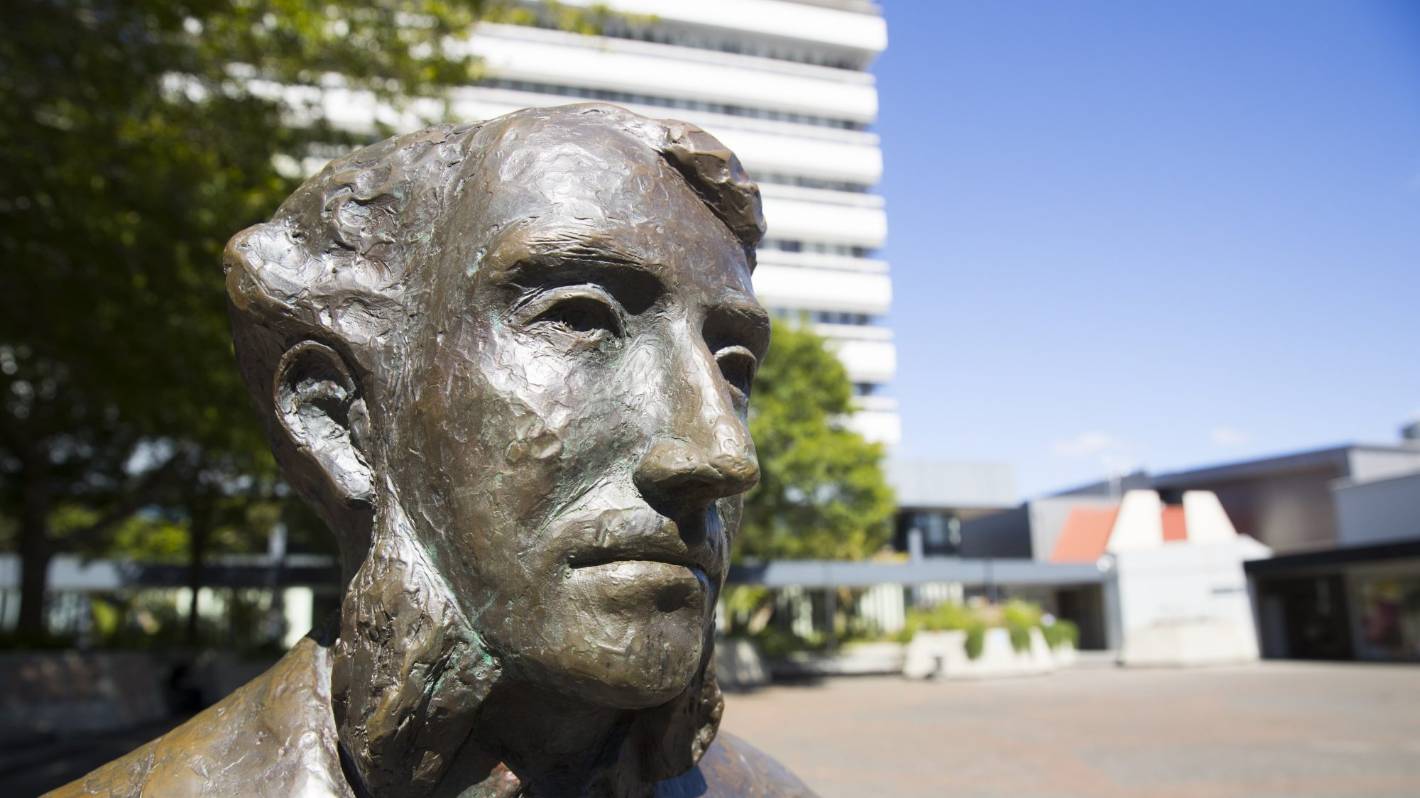
The statue of Captain John Hamilton outside Hamilton council offices. Photo: Christel Yardley.
Last year we saw the removal of a much-reviled Captain Cook statue in Gisborne to the Tairāwhiti Museum, in the heat of Tuia250 Encounter commemorations.
A range of writers at The Spinoff put forward their nominations for statues and monuments to go. As historian Vincent O'Malley said to Stuff, open discussion and debate around history is key. "I think the question today is, 'if those monuments don't reflect the values and aspirations of society today, how can we change that?’ And that's not simply a question of retaining them or toppling them." O’Malley supports the Māori Party call for an enquiry. Tairāwhiti artist Nick Tupara, of Ngāti Oneone shares on RNZ similar sentiments. Museums are one great option, a graveyard for statuary another. Tame Iti, as Te Karere reports, suggests a museum dedicated to racism. But I also like a friend’s suggestion: offer them back to their descendants.
Light filled Film Future
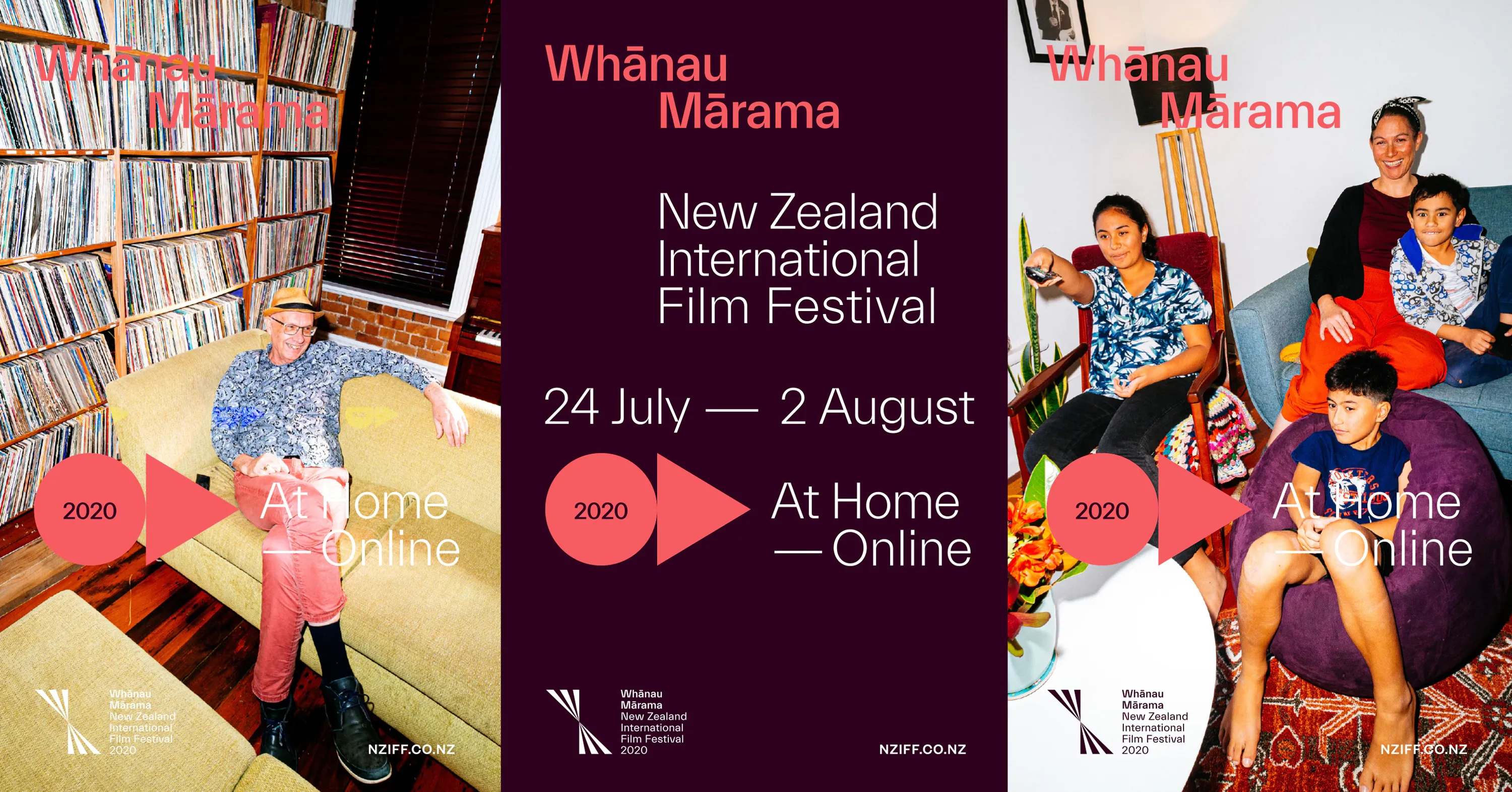
Whānau Mārama New Zealand International Film Festival posters and new branding.
The New Zealand International Film Festival has unveiled bold new branding, embodying a fresh new way of being under new leadership after the departure of longtime director Bill Gosden.
Whānau Mārama (family of light) is their new descriptor. It’s well-thought through: firstly, it reflects the role the festival plays in dark months “as a source of light... while also reflecting the rich diversity of contemporary society as well as the country’s geographic and spiritual place at the centre of the Pacific and the Māori world.” Director Marten Rabarts: “Whānau Mārama used lyrically also describes the celestial bodies of the night sky; by these we can navigate, in the same way we use the ideas found in films curated for the festival to chart our way forward.”
There are changes too to their artwork approach in line with the idea of the festival as a whānau: a series of photographs of people involved in the festival, from film directors and volunteers to their longest-serving projectionist, at Auckland’s Civic Theatre.
Bill Gosden himself ran the film festival for 40 years before illness saw him last year having to retire. That story is told by Sarah Catherall on Stuff last year here. On Wednesday Gosden had a special investiture at Government House to be made an Officer of the New Zealand Order of Merit for services to film.
Also recently announced this year’s guest selector, writer and director Tusi Tamasese (The Orator, One Thousand Ropes). Tamasese will select six finalists for New Zealand’s Best short film competition, which this year had 78 submissions.
They tell me the festival programme is due out Thursday 25 June. The festival has already announced it will be, for the first time, an online festival. How that economic model works must be interesting. That seems likely not to change despite the country having gone to level one, but whether some independent cinema events come into the mix (those relationships being long-treasured) will be interesting to see. Big chain cinemas like Event and Readings in some cases remain closed in line with Hollywood schedules.
Whānau Mārama will no doubt be watching closely how the current online DocEdge Festival of documentary film is doing. In a story featuring festival director Dan Shanan, The Big Idea details “what could have been a disaster has turned into potentially the most influential incarnation of the annual event’s 15-year history”. As outlined in this Newshub story, working with Chorus, the festival has made their entire side programme of 26 short films (local and international) available free online. In this whānau’s whare, we’ve booked tickets for full-length docos like never before, and have already watched some great NZ short docos online - on the remarkable Tapu Te Ranga Marae in Wellington and Rise, about the journey for young people organising September’s climate strike march.
Finally in film news: we’ve heard plenty in recent weeks about - with a healthy budget handout to encourage it - the potential for growth in the local film industry in housing international production. Here’s Lynn Freeman talking to Australian producer Tony Ayres about the untapped potential he sees for New Zealand, beyond Avatar - a potential Freeman notes our government is pinning great hopes on.
Getting Creative in School
The NZ Herald headline rubbed salt in the wound for art teachers in schools on Friday: ‘Government spends $4m to boost creative learning programme and hire 300 art teachers’.
Rather than art teachers, those 300 mentioned are in fact artists, being paired with schools for short term projects. The announcement was of extra funds over the next three years to grow the Creatives in Schools programme from 304 projects to 510. Given there are more than 2500 schools in New Zealand, the programme remains a modest start.
The wound felt by many I’ve spoken to is that the programme fails to acknowledge art educators’ increasing calls (examples here and here) for better resourcing of teachers in schools and the placing of the arts more centrally in the curriculum. Certainly, it’s a step in the right direction - and welcome resourcing for schools and artists alike - but it does little to change the longer-term needs for the arts to play a stronger role in education through trained teachers.
Up North
Last week the Government also announced it would give Whangārei's Hundertwasser Arts Centre and Wairau Māori Art Gallery an additional $4.5 million of funding from the Provincial Growth Fund, after contributing $13.9 million in 2018. Last November the trust behind the centre announced their budget had blown out by $4 million. The project, due to open mid-2021, is expected to cost $33.2m.
“The Hundertwasser Art Centre was identified by the region as a priority cultural and tourism project,” said Winston Peters at the announcement. “The centre is unlike anything else under construction in New Zealand. It is considered a work of art in itself, with complex curved lines and intricate engineering that needs to accommodate a heavily afforested roof to add to its intricacy...” Ahead of lockdown, art centre chief executive Kathleen Drumm outlined some of the features of the unique building in a video with Stuff, including teasing mention of “an example of the world's rarest tree”. Presumably, this will be part of the forest designed to grow on the building’s roof. What could the tree be? Our bet is on the native Kaikomako (Pennantia baylisiana), of which Te Ara tells me there was until recently just one specimen, growing on Great Island in the Three Kings Islands.
This week Stuff also had a generous piece focussing on some of Whangārei’s existing art treasures: the Quarry Arts Centre, Whangārei Arts Museum, Hihiaua Cultural Centre, the sculpture on the Hātea Loop walkway and various other arts initiatives.
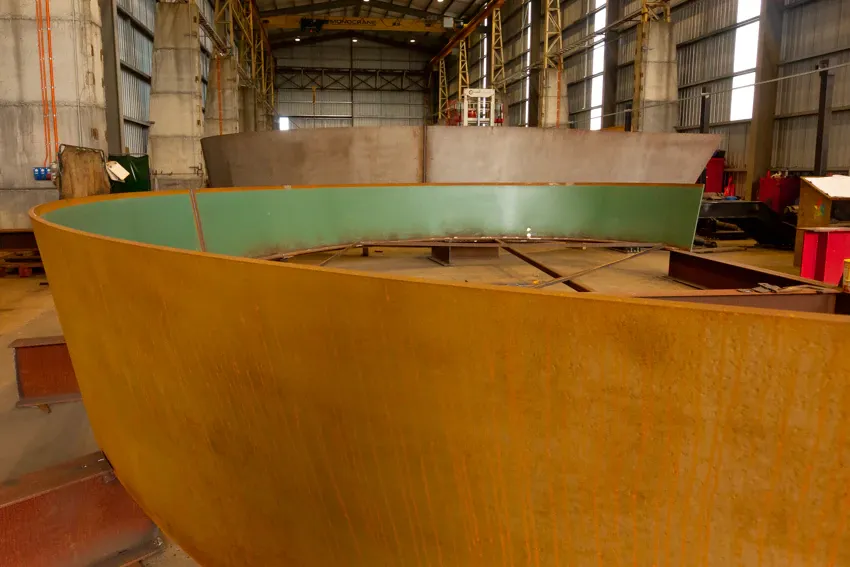
Camera Obscura under construction at Whangarei’s Culham Engineering.
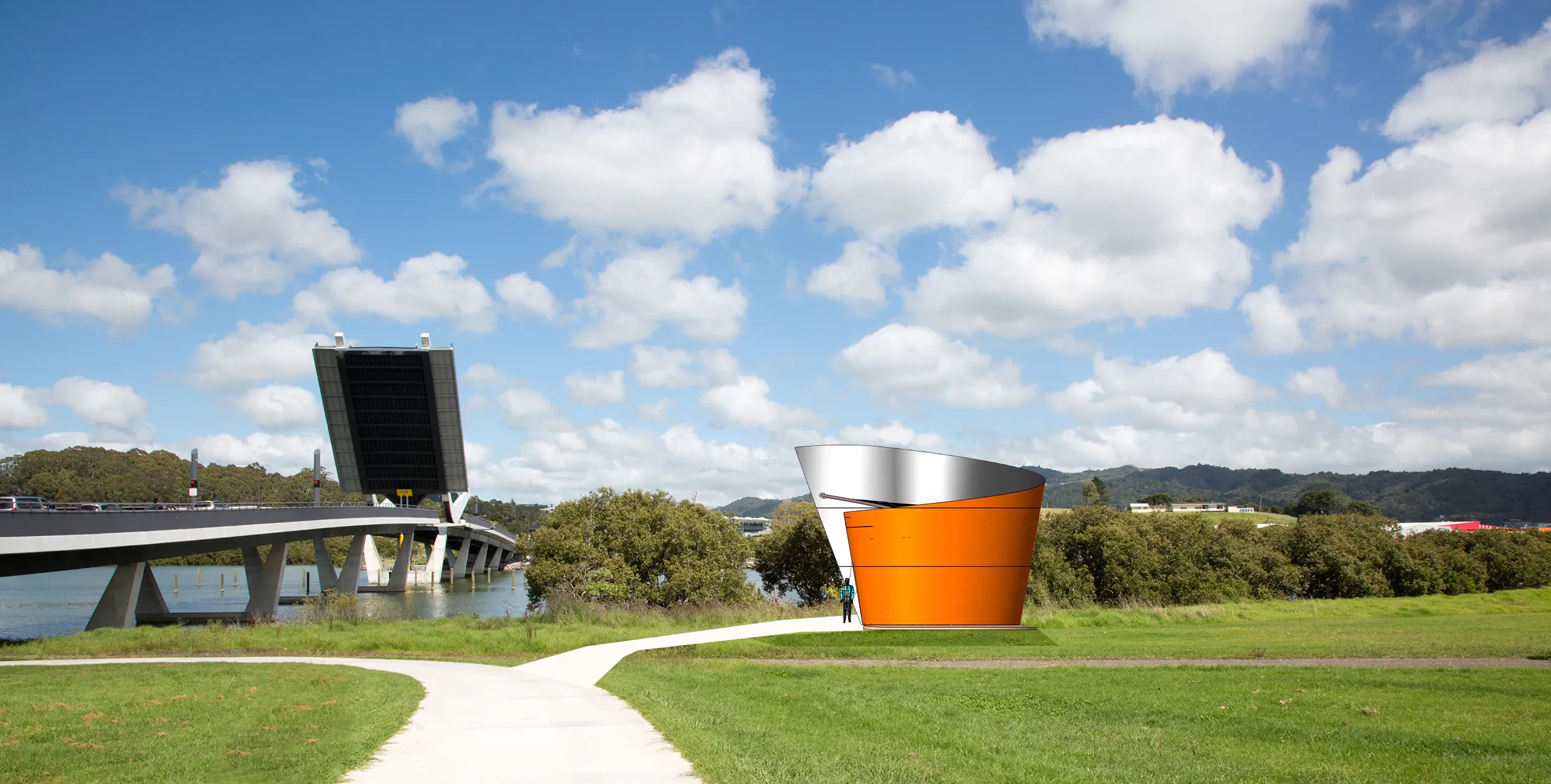
Digital mockup of Camera Obscura in situ.
In terms of that walkway, it's great also to see an ambitious permanent camera obscura project cum steel sculpture reach realisation. It also received Provincial Growth Fund money in 2019. Whilst they were in the city, ministers Peters and Shane Jones along with local council visited Culham Engineering where the large 12-metre wide steel housing of the camera - to be sited on the Hatea Loop providing a view of Te Matau ā Pohe, the lower Hātea river bridge - was being finished. The project has been the vision for nine years of photographer Diane Stoppard, architect Felicity Christian and sculptor Trish Clarke. Diane tells me the finished sculptural shell will be trucked onto the site at the end of July with the hope it will open in October.
Down South
Meanwhile at the other end of the country, making a decision by the collective local councils on restoring or replacing the earthquake-prone Southland Museum and Art Gallery labours on. $712,000 is being spent fitting out an interim museum space in Invercargill which is due to open in about two months time (here’s the latest Southland Times story). The region’s museum was closed in April 2018 and a report from strategic planner Tim Walker recommended the pyramid museum building be retained and redeveloped at a cost of $66 million.
New Post Lockdown Theatre
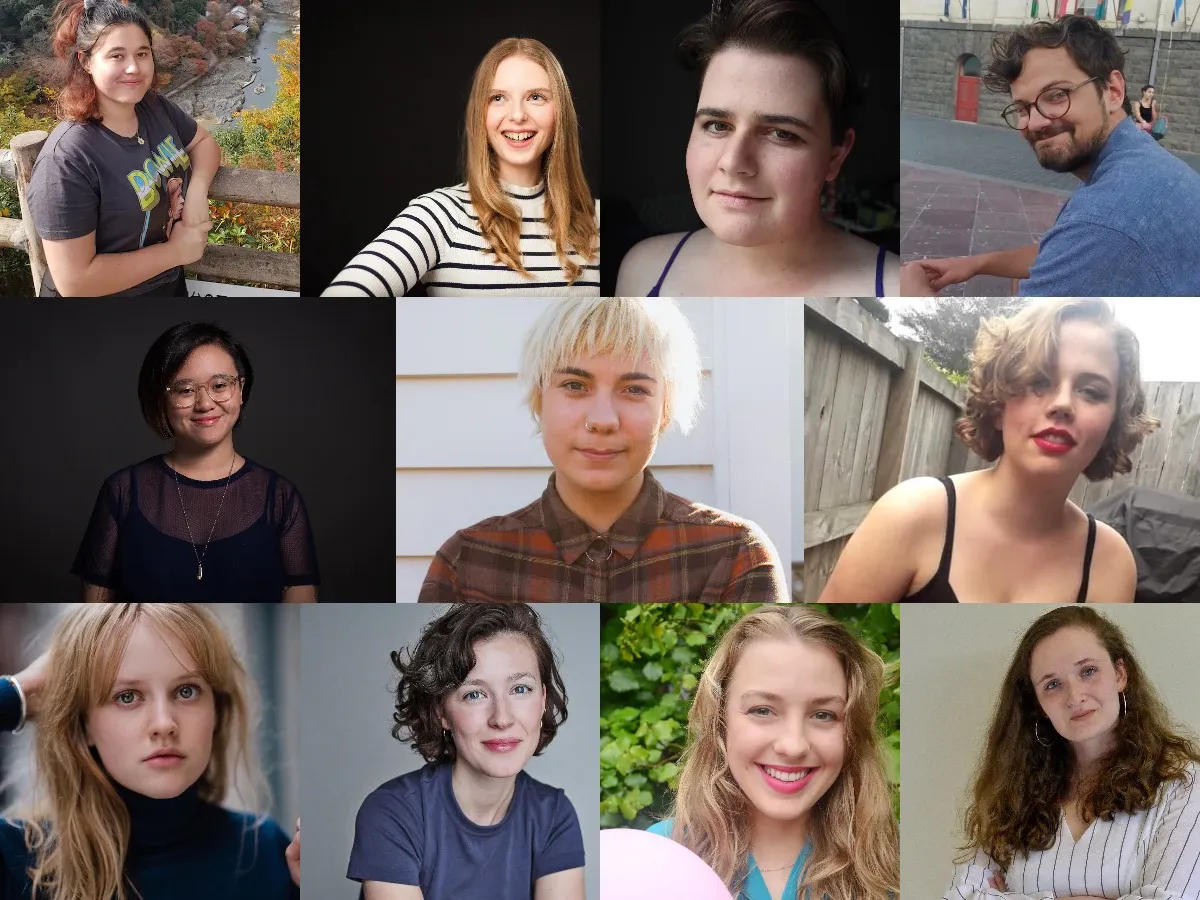
The finalists for the Playmarket Playwrights B4 25 competition: L-R Top Row - Michaella Simpson, Emilie Hope, Emma Maguire, Ben Wilson. Middle - Natasha Lay, Joni Nelson, Melanie Allison. Bottom - Markella Kavenagh, Georgie Oulton, Emma Rattenbury, Amy Wright.
Here’s a great post lockdown idea. Christchurch’s Blackboard Theatre Collective, - founded by a group of National Academy of Singing and Dramatic Art (NASDA) grads - is bringing together parts of a dozen shows cancelled due to coronavirus to “create a musical mashup of all the best bits”, Waiting in the Wings - as reported on Stuff. The collection is strong on comedy and musicals. Blackboard Theatre Collective was recently awarded a $26,000 Arts Continuity Grant from CNZ to do a 72-hour songwriting challenge, which will create four new pieces of musical theatre.
Playwrights b4 25 is New Zealand playwrights’ agency Playmarket’s annual young persons playwriting competition, and it highlights how writing for theatre continues to have plenty of energy. Presenters Auckland Live award $1,500 to the winner, which this year goes to Ben Wilson for his play Homemade Takeaways. In the comedy-drama set at Christmas, “a Dunedin based drummer, employed at a chocolate factory, suddenly uproots his job and city; a recently dumped self-help expert is self-destructing; a primary school teacher wants to write violent children’s fiction; and a thirty-one-year-old, skateboarding, Emma-Thompson-obsessed man-child is sleeping on the couch.” Information on all the finalists' work is here.
Wellington Council Steps Up
Wellington City Council has wisely redirected funds from its 2019/20 venue subsidy unspent due to lockdown – funding normally used to help arts and community groups access Council venues - to support four key independent music venues: San Francisco Bathhouse, Meow, Rogue and Vagabond, and Valhalla. "The recently announced package from the Government will offer longer term support for the music industry in New Zealand, but this Council support ensures that local venues can keep going until that kicks in,” says Senior Arts Advisor Felicity Birch.
Meanwhile, here’s a great piece on this platform by Raymond Sagapolutele on the threats currently facing the arts in Tamaki Makaurau and why there is so much to cherish.
Thermostat rises in Palmerston North
Palmerston North is welcoming the return in a new space of a gallery supporting independent artists, Thermostat, which opened back in 2001 and has amassed an impressive history of strong shows from artists nationwide (here’s a review I wrote back in 2011 discussing the gallery’s model). First show up, opening end of June at 154 The Square is painter Victor Berezovsky. Instagram account here.
Reading and Watching on New Art and Literature
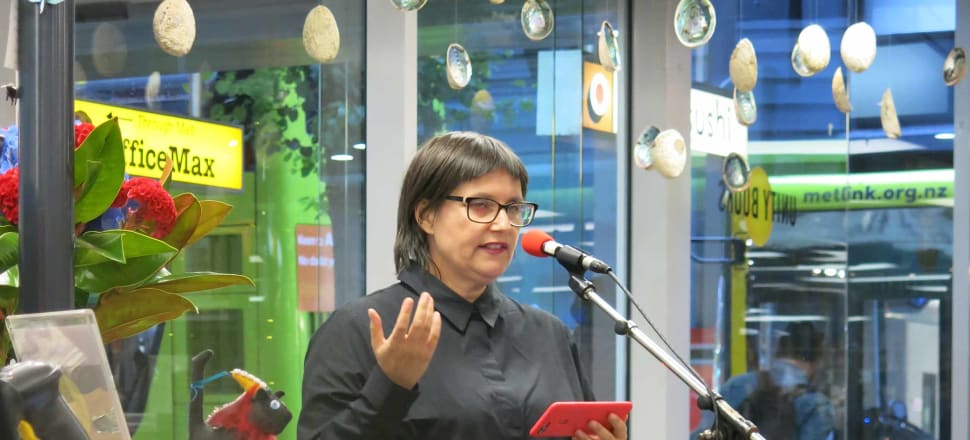
Pip Adam. Image: Ryan Skelton
Pataka in Porirua has reopened with exhibitions by women artists, under new curator Ioanna Gordon-Smith, who has recently returned to her hometown. This Stuff story interviews Gordon-Smith and Porirua ceramic Uku artist Stevei Houkamau.
Pip Adam’s follow-up to the Ockham NZ Book Award winning The New Animals came out this week, Nothing to See with her launch party a video (the last in a series) of a house launch party online in the virtual world of The Sims. It’s that kind of book, as Charlotte Grimshaw reviews on Newsroom - about selves and the way they fracture in ways we can’t predict. Pip Adam spoke to Kim Hill on Saturday.
Adam is also one of the interviewers in a video interview series with Wellington Cuba Street area gallerists and artists Curators of Cuba. When Cubadupa was cancelled as lockdown hit in March, a roving discussion series I was producing had to be scuttled. Now it has a longer life in partnership with the galleries and council online presented by Cubadupa and Artexplore. The first four of 14 gallery discussions are now at this page and we are adding new content twice weekly until the middle of July.
Editor and critic John Hurrell’s visual arts review platform Eyecontactsite has stayed the distance - the site is now 10 years old. With galleries reopening, there’s a steady trickle of reviews by Hurrell and in Christchurch, Andrew Paul Wood. This month features Hurrell’s look at watercolours of twinned amplifiers by artist and musician Michael Morley at Auckland’s Michael Lett Gallery.
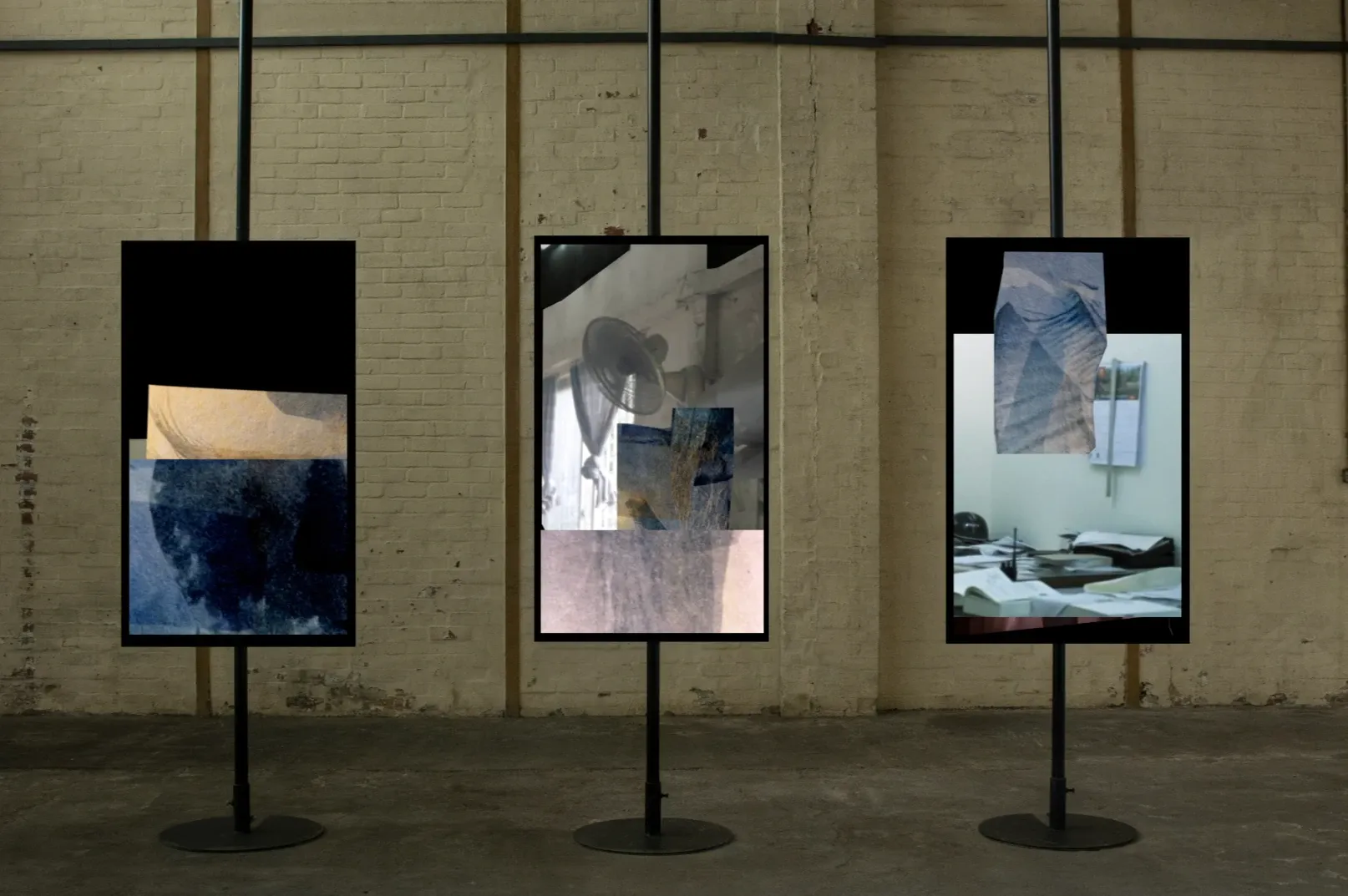
Sonya Lacey, Pillows (2020) State of Motion 2020: Rushes of Time, Singapore. Courtesy of Circuit.
There’s some great recently released watching and reading up at Circuit: Artist Film and Video Aotearoa. Lance Pearce writes on the doppelgänger work of Ronnie Van Hout at Ivan Anthony Gallery ahead of lockdown, Hamish Win writes an interesting essay on the subject of duration, and Jane Wallace reviews another exhibition caught short by COVID-19, I’m on a Dreamliner: Pillows by Sonya Lacey at new Christchurch artist-run space Paludal.
“The Dunedin School Of Art, which has had a fairly long as well as a creditable history, will shortly be to all intents and purposes a thing of the past unless there be still local energy and influence enough to conduct successfully a campaign for its salvation.” So was written 100 years ago in the Otago Witness as reprinted in the Otago Daily Times. Salient words at a time when creative courses nationwide in polytechnics have been under threat.
Awa Wahine is a site dedicated to the creative work of wāhine and amongst recent content, I’m recommending this dedication to Pōneke in images, words and taonga puoro from Ruby Solly which accompanies her new album out on bandcamp.
